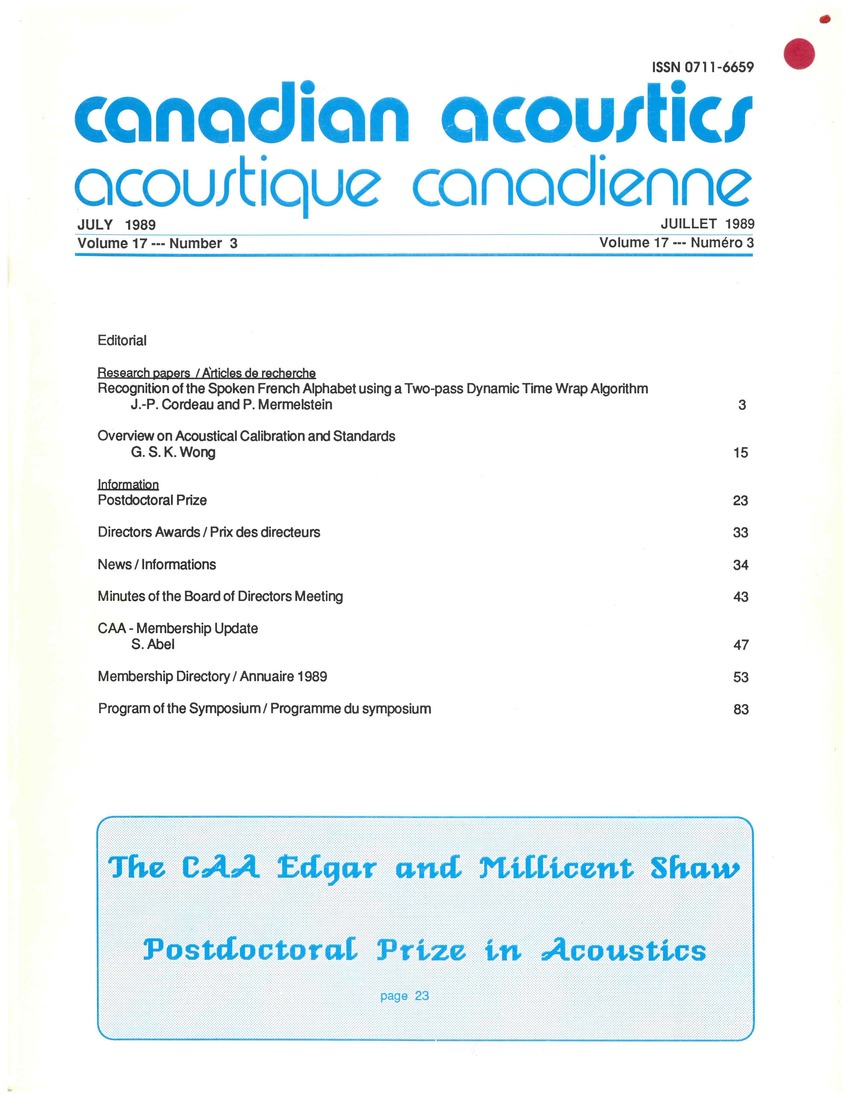Recognition of the spoken French alphabet using a two-pass dynamic time warp algorithm
Keywords:
frequency-domain analysis, spectral analysis, speech recognition, time-domain analysis, isolated word recognition, word classes differentiation, confusable sets members discrimination, within-class tokens separation, temporal regions, spoken French alphabet, two-pass dynamic time warp algorithm, acoustically similar words, within-class words, special recognition approach, highly confusable sets, cepstral regions, greatest between-word variance, modified frame-specific weighting scheme, error rateAbstract
The spoken French alphabet is composed of acoustically similar words that can be organized into six distinct classes. For recognizers working on such a data base, the words not recognized properly are always within-class words and a special recognition approach must be introduced to overcome these effects. A two-pass algorithm is used to discriminate between members of the highly confusable sets. The first pass is used to differentiate similar word classes, while the second pass uses a discriminant analysis to separate within-class tokens. The second stage provides better discrimination, separating the words within each class through improved focus on the temporal and cepstral regions of greatest between-word variance. The improvement in discriminability is provided by a modified frame-specific weighting scheme. The error rate is reduced by 50% using this approach as compared to the direct one-step DTW algorithmsAdditional Files
Published
How to Cite
Issue
Section
License
Author Licensing Addendum
This Licensing Addendum ("Addendum") is entered into between the undersigned Author(s) and Canadian Acoustics journal published by the Canadian Acoustical Association (hereinafter referred to as the "Publisher"). The Author(s) and the Publisher agree as follows:
-
Retained Rights: The Author(s) retain(s) the following rights:
- The right to reproduce, distribute, and publicly display the Work on the Author's personal website or the website of the Author's institution.
- The right to use the Work in the Author's teaching activities and presentations.
- The right to include the Work in a compilation for the Author's personal use, not for sale.
-
Grant of License: The Author(s) grant(s) to the Publisher a worldwide exclusive license to publish, reproduce, distribute, and display the Work in Canadian Acoustics and any other formats and media deemed appropriate by the Publisher.
-
Attribution: The Publisher agrees to include proper attribution to the Author(s) in all publications and reproductions of the Work.
-
No Conflict: This Addendum is intended to be in harmony with, and not in conflict with, the terms and conditions of the original agreement entered into between the Author(s) and the Publisher.
-
Copyright Clause: Copyright on articles is held by the Author(s). The corresponding Author has the right to grant on behalf of all Authors and does grant on behalf of all Authors, a worldwide exclusive license to the Publisher and its licensees in perpetuity, in all forms, formats, and media (whether known now or created in the future), including but not limited to the rights to publish, reproduce, distribute, display, store, translate, create adaptations, reprints, include within collections, and create summaries, extracts, and/or abstracts of the Contribution.


